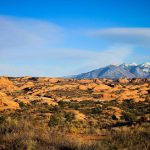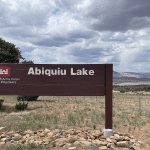- Two Nevada bills aim to reduce overuse of groundwater.
- AB 104 focuses on voluntary water rights retirement.
- SB 36 sets up a state-led water buy-back initiative.
- The Nature Conservancy supports AB 104 for its ecosystem focus.
- Both bills target areas facing groundwater depletion and conflict.
Wednesday, April 9, 2025 — Nevada lawmakers are weighing two significant pieces of legislation that could redefine the future of water management. Assembly Bill 104 (AB 104) and Senate Bill 36 (SB 36)
and Senate Bill 36 (SB 36) both propose ambitious programs to permanently retire groundwater rights—but they take different routes to get there.
both propose ambitious programs to permanently retire groundwater rights—but they take different routes to get there.
Two Approaches, Shared Goal.
At their core, both bills seek to address the overuse of groundwater in Nevada’s most stressed basins by buying and retiring water rights from willing sellers. This effort is aimed at restoring balance to overpumped aquifers, resolving conflicts among users, and protecting the state’s environmental resources.
AB 104 establishes the Nevada Voluntary Water Rights Retirement Program . It invites agricultural producers and other water right holders to participate in a state-run, voluntary buyout effort. In contrast, SB 36 creates the Nevada Water Buy-Back Initiative
. It invites agricultural producers and other water right holders to participate in a state-run, voluntary buyout effort. In contrast, SB 36 creates the Nevada Water Buy-Back Initiative , a more top-down mechanism that empowers the state to proactively identify and prioritize critical basins for targeted rights retirement.
, a more top-down mechanism that empowers the state to proactively identify and prioritize critical basins for targeted rights retirement.
Both initiatives would be administered under the Nevada Conservation and Recreation Program, with oversight from advisory committees and guided by detailed regulations to ensure transparency and effectiveness.
Support from The Nature Conservancy.
The Nature Conservancy (TNC), a major voice in water conservation policy, issued a strong endorsement of AB 104 in a letter to legislators dated February 24, 2025. Citing a 2022 study of more than 6,500 wells across Nevada, TNC found that nearly 40 percent of wells exhibited significant long-term groundwater level declines. These declines, the group warned, are already contributing to drying springs, reduced stream flows, and degradation of groundwater-dependent ecosystems (GDEs).
dated February 24, 2025. Citing a 2022 study of more than 6,500 wells across Nevada, TNC found that nearly 40 percent of wells exhibited significant long-term groundwater level declines. These declines, the group warned, are already contributing to drying springs, reduced stream flows, and degradation of groundwater-dependent ecosystems (GDEs).
“AB 104 offers a smart, voluntary way to reduce use before conflicts escalate,” said Dr. Laurel Saito, Nevada Water Strategy Director at TNC. She noted that voluntary retirement programs have seen success in Kansas, Colorado, and Oregon, and that Nevada’s own pilot effort using $25 million in ARPA funding proved such programs can work effectively.
She noted that voluntary retirement programs have seen success in Kansas, Colorado, and Oregon, and that Nevada’s own pilot effort using $25 million in ARPA funding proved such programs can work effectively.
The bill, TNC emphasized, would allow the state to build on lessons learned from those efforts while creating a permanent funding structure to continue the work into the next decade.
Cost and Oversight.
The financial impact of both bills is relatively modest compared to their potential benefits. AB 104 is expected to cost approximately $328,864 over three years, mostly for personnel and implementation. SB 36 would cost slightly more—around $394,264—due in part to funding travel and compensation for advisory committee members.
AB 104’s advisory committee would be composed of volunteers representing agricultural, municipal, and conservation interests. SB 36 also includes an advisory committee, but compensates its members up to $80 per day plus expenses.
Timelines and Urgency.
AB 104 includes a statutory deadline: no new applications for the program will be accepted after June 30, 2035. It also requires the Department of Conservation and Natural Resources to adopt enabling regulations by July 1, 2026. SB 36 does not include a participation deadline, though it allows one additional year for regulations to be adopted.
These timelines reflect the urgency of the problem, as well as the need for measured, collaborative implementation.
A Model for the West?
In a region where water scarcity is a defining issue, Nevada’s twin bills offer a rare and constructive approach to water reform—particularly by emphasizing voluntary participation and collaborative governance.
If successful, the efforts outlined in AB 104 and SB 36 could position Nevada as a leader in sustainable groundwater management. Rather than waiting for crisis to force curtailment or expensive litigation, the state is attempting a proactive path—one that respects water users while preparing for a drier, more uncertain future.
For now, lawmakers must decide whether they will adopt one, both, or neither of these legislative tools. But one thing is clear: the clock is ticking, and Nevada’s aquifers can’t wait.
For more information, visit
dcnr.nv.gov
groundwaterresourcehub.org






Leave a Reply